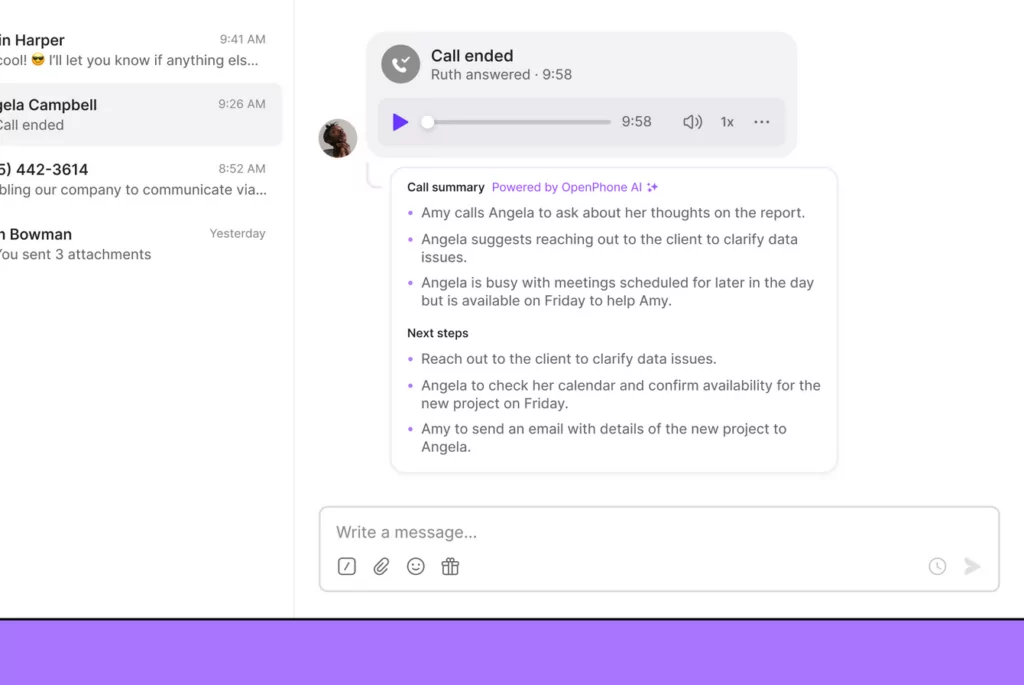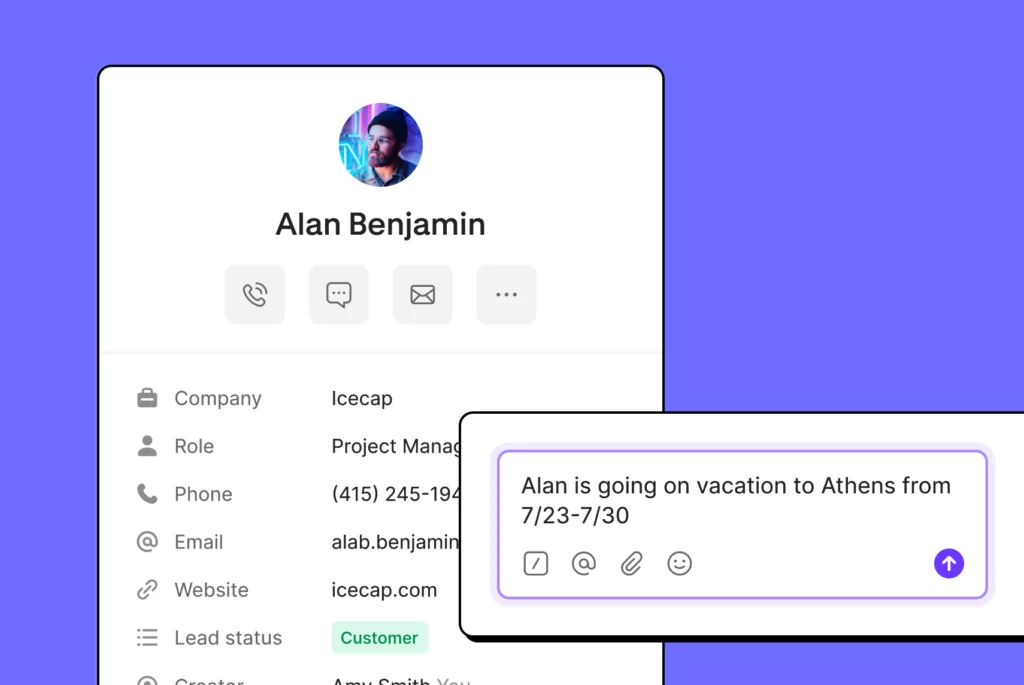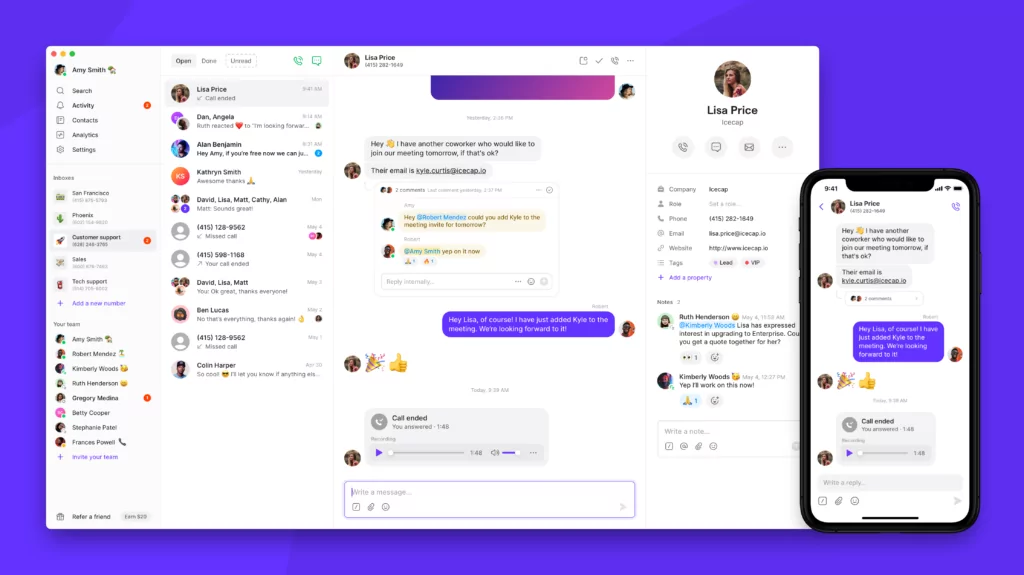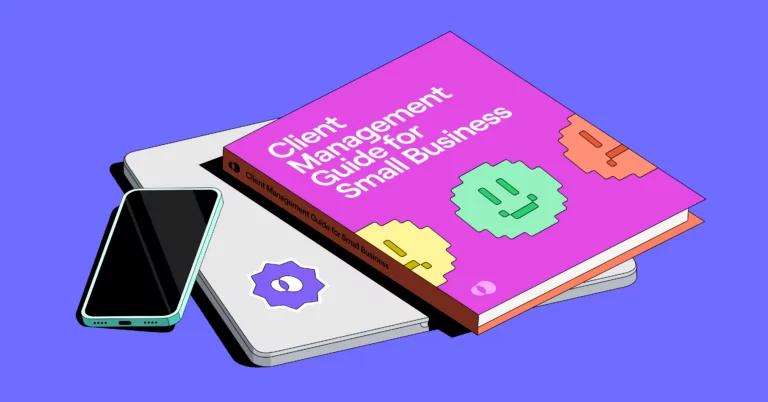Think about your last exceptional experience as a client. Maybe your account rep remembered your birthday. Maybe the company went above and beyond in a deliverable. You remember these experiences because they made an impression. They make you feel like your business is valued.
Now, think of your own small business and client management. Does it feel like a smooth operation, or is there room for improvement? Or, dare we suggest, is it chaotic?
We get it. Small businesses are juggling a lot, and effective client management can sometimes land on the back burner. But small businesses grow into larger businesses, in part, due to how well they manage clients. Everything from little touches to contract negotiations can impact overall client satisfaction.
In this guide, we’ll walk you through everything you need to know about effective client management. As a small business ourselves (been there, done that!) and with insights from Pam Abreu, Director of Client Relations at 5K Media, we’ll share some process recommendations and best practices to keep in mind.
What is client management exactly?
Small businesses often feel pulled between two states: keeping the client happy and protecting the bottom line. Clients pull you in different directions and you want to accommodate them, but it also comes at a cost in terms of time and resources.
Client management for small businesses is exactly what it sounds like: overseeing your or your team’s interactions with clients. You manage their expectations while also providing a great experience. And when you have a good strategy in place, you’ll improve client retention, earn repeat business or referrals, and build a reputation in your industry.
Abreu notes that potential clients expect a true partnership. “Be that trusted advisor… Let them know that you’re not just looking out for the money in your pocket, but you’re really looking out for your client’s well-being and what’s best for them,” she says. “Because then they’ll see the value-added services coming from you. And they’ll look to you for more recommendations as the relationship and partnership grows.”
Companies with great client management are working hard behind the scenes. The experience doesn’t happen by accident; it’s the result of people, processes, and tools. Everybody works together to understand client needs, communicate effectively, and consistently delight the customer.
Essential steps for every client management process
From your client’s point of view, there are some significant touchpoints in the relationship:
- You’ll get to know them in the beginning.
- You’ll have ongoing client communication.
- You’ll need to deliver on your promises, whether it’s a product or a service.
If you can define a process for each phase of the customer journey, you’ll build trust with your clients that you are the right partner. You’ll also create the customer loyalty that’s so invaluable for any small business.
Onboard your clients
As soon as a contract is signed, you’ll need to move your client through an onboarding process. Because first impressions matter so much, try to make this a seamless experience. This is your chance to clearly communicate expectations and let the client have positive interactions with a member of your customer experience team.
Abreu has a five-step process for onboarding new clients at 5K Media. These include:
- A welcome email introducing the 5K Media team members.
- A kickoff call between the client and 5K Media team members.
- An industry glossary is shared to ensure everyone is on the same page with industry terms and jargon.
- An intake form is sent to clients collecting mailing addresses, birthdays, and other information (useful for personal touches!).
- A credit card authorization collects payment information from clients.
A kickoff call sets the tone for the client relationship. During the call, you can review the project or contract scope and hear the client describe their business objectives in their words. You can also cover any project management tools used, communication tools/channels, and how frequently clients can expect updates from your team.
The more you communicate, the less chance for a misunderstanding later.
Pro Tip: Execute action items faster with AI call summaries in OpenPhone
Teams often come away from kickoff calls with several next steps and action items. Since they’re moving fast to meet aggressive deadlines, some tasks can slip through the cracks.
OpenPhone’s AI call summaries make sure your team doesn’t lose track of any action items for your clients again.

OpenPhone automatically generates a summary of the call, including action items for effortless note-taking. Plus, a full transcript broken down by speaker and timestamps — to reference exactly what was said.
Touch base with clients
Your kickoff call should establish a regular cadence to check in with your clients. To make the most of these interactions, you need to use the time to further dig into the client’s needs.
There’s no “one-size-fits-all” when it comes to frequency. It should be often enough that you’re being proactive instead of reactive. You might schedule recurring bi-weekly or monthly calls or touch base at certain milestones within the project. In any case, you can use tools to help you manage your check-in cadence (more on that later).
During the calls, review the progress of the client’s projects and address any concerns. Your goal is to ensure that everything is still on track with the client’s objectives and expectations. Come to the meetings with a clear agenda, but leave time for your clients to speak freely. If the meeting ends early, great! Everyone has got back time in their day.
Review deliverables and ROI
Most of your meetings may involve discussion with your customers, but don’t forget to showcase the value you provide to clients. This might be an email follow-up, a progress report, key performance indicators (KPIs), or other metrics — something the client can share internally.
Even if the client has a great relationship with your team, in the end, it will always be about business results. Happy clients understand what they’re receiving in exchange for the money they’re paying. Don’t assume the client knows the value of your team’s work.
Like your touch base calls, you’ll want to update your clients regularly on the agreed-upon deliverables. If you’re a design agency, for example, you might provide a written recap of each element of a brand refresh and how it aligns with the overall scope and goals.
5 client management best practices for small businesses
Your onboarding, touch bases, and deliverable reviews will be client-facing activities. Internally, you can follow some best practices to ensure these interactions are as meaningful as possible.
Asking a client, “How’s it going?” during a touch base is too broad. Be prepared with the right questions and information to deepen the client relationship.
1. Create an ideal client profile
Partnering with the wrong clients or projects can be like swimming upstream. You can struggle and struggle and not make any progress.
“It’s about finding the people you want to work with who are going to create lasting relationships,” says Abreu. “Ask yourself what the ideal client looks like. What are the red flags?” She thinks small businesses should be selective about who they work with. If you’re taking on every client that comes in your direction, it could end up harming the business in the long run.
Your ideal client profile will look different based on your industry, but you can start by identifying customers you think have the greatest chance for success. You can look at attributes like organization size, industry, location, department, or tech stack.
If these customers have a positive experience, you’ll be able to draw in more customers through referrals and reviews and develop repeatable internal processes.
2. Build relationships versus transactions
No client wants to feel like a number. Or feel like your team is simply going through the motions of a project. You can go through all of the steps of a kickoff call, touch base calls, and showing results — and clients may still feel no connection to your team.
At 5K Media, Abreu sends birthday notes to clients or congratulations when someone has a baby. The personal touches go a long way.
Abreu thinks it’s also important to tell clients if your business is not the right fit for a project. It shows the relationship is more than transactional: they may still use your company for their other needs and will respect your honesty.
“It’s harder to break up with a business when you have a personal relationship with them,” says Abreu.
Pro Tip: Capture custom client details
If you’re juggling dozens of clients at once, it can be hard to remember that Emma from Charleston likes paddle boarding.
One way to keep track of client details is to take notes directly in the platform you use to communicate with them.

A business phone like OpenPhone lets you capture client notes directly in the app. That way, the next time you speak to a client, you can see the notes you took previously and mention them on the call. It only takes a second to jot down, but asking a client how their vacation in Athens was or how their kid’s tennis match went will help them feel special and important.
It can also let you transfer client relationships among your team members smoothly in case their point of contact changes.
3. Schedule internal brainstorming sessions
Even if your clients have dedicated account reps or project managers, your entire team should come together to discuss client goals and outcomes. People not working directly with the client can offer additional perspectives or “I’ve had that happen before” guidance.
These meetings should occur ahead of client touch base calls or deliverable reviews. That way, the client’s direct team can be prepared to offer additional suggestions or solutions to the client.
“We have a full team meeting every week where we talk about specific clients,” says Abreu. “And a lot of that is talking about potential opportunities we see with that client. But it’s talking about the relationships with that client as well. What are we seeing? Are they struggling? Or are we struggling with them?”
Internal meetings can also surface overall issues, such as capacity or bottlenecks, that might be impacting the overall client experience. The team can then discuss potential ways to remedy those problems together.
4. Measure client satisfaction early and often
Asking an account rep to take the client’s temperature isn’t the same as asking the client directly. You can use surveys to ask clients about their experience, whether it’s on an ongoing basis or at the end of a project.
5K Media uses Net Promoter Score (NPS) with clients. “That’s a way to start gauging where clients are at early on and hoping to troubleshoot people that might not be incredibly happy,” says Abreu. If the client gives an NPS score lower than eight (out of ten), someone from 5K Media reaches out and asks how the company can improve the score. “That leads to useful insights we can use to fix the situation and increase overall satisfaction.”
She also notes that it’s not only about getting a high NPS. It’s also about making unhappy clients feel heard.
Teams can also look for other signals a client might not be happy, such as skipping meetings or slow replies to emails. If the client is busy, that’s one thing. But it might also mean the client isn’t engaged — especially if the client’s behavior changes over time.
5. Consider how to deliver more value
Your clients will feel like they’re getting more “bang for their buck” when you deliver more than the results promised.
For example, if your team is always accessible via phone or email, your clients will feel like their time is important. You might consider covering multiple time zones or having backup resources when a client has an urgent issue and their primary contact is unavailable.
Abreu says her team is always looking for ways to provide more value and proactively makes suggestions to the client. “It’s not about upselling them,” she says. “If we think a service is going to be beneficial to them, then we’re going to recommend it to them, 100%. It’s another way we deliver value to our clients.”
Key client management skills
The right team members will ensure that client management reflects the experience you want clients to have.
Of course, client management can require a huge array of skills. Finding someone with every desired trait might be like finding a unicorn employee. Instead, you can form a team that complements each other and brings different skills to the table.
An account manager would need:
- Relationship-building skills to cultivate and maintain strong long-term relationships with the client.
- Empathy to understand the client’s needs and concerns.
- Feedback analysis skills to actively seek and act upon client feedback to improve services.
A project manager would need:
- Time management skills to manage multiple clients, projects, and priorities.
- Project management skills to oversee projects from start to finish, ensuring they stay on track, within budget, and will meet client expectations.
A sales manager would need:
- Sales and upselling skills to recognize opportunities to offer clients additional services or products.
- Negotiation skills to balance pricing and the needs of the client with the objectives of the business.
A director or team lead would need:
- Conflict resolution skills to address and resolve disagreements or misunderstandings in a constructive manner.
- Problem-solving skills to identify challenges and propose solutions quickly.
But across the board, for all roles, it’s critical to have:
- Communication skills — both written and verbal — to convey information clearly, listen actively, and engage with clients.
- Collaboration skills to work effectively with internal teams to ensure client needs are met and projects are executed smoothly.
Make sure your team is properly trained in communication and collaboration. Not all employees have the same background or expectations when it comes to client management, even if they have the necessary skills. You’ll want to cover best practices and what client management looks like at your company.
Remember, you’re creating a culture within a small business, and your team becomes ambassadors for your brand vision. The team should share your mission and values. Additionally, “how you treat your employees internally is a direct reflection of how your employees treat your clients,” notes Abreu.
What to look for in a client management system
Even someone with exceptional client management skills can’t remember every detail! It’s important to have a client management system in place.
With client management software, sometimes called a customer relationship management system, or CRM, you can review client correspondence, add internal notes about the client’s status, and keep track of the check-ins or client birthdays. You can also create a pipeline of potential upsells or renewal opportunities.
At a bare minimum, a CRM is a contact management software where you can add data about your clients, both individuals and businesses. You’ll also want to look for a CRM that’s:
- Easy to use: You don’t want users to struggle.
- Within your budget: CRMs can get expensive, so think about your “must have” features.
Additional bells and whistles will make your client management even easier, such as:
- Integrations: Save time and connect with other tools, like email systems for marketing campaigns or project management automation.
- Analytics and reporting: Gauge client engagement and satisfaction.
- Built-in calling and messaging: Streamline the experience for your team. Alternatively, you can use an integration between your phone system and your CRM.
Your CRM software should be a central hub for everything related to your client. Your workflows should include adding updates after your internal meetings and any client calls. Anyone reviewing the client in the CRM should be able to quickly understand the overall client relationship.
Manage your clients effectively with OpenPhone

You may have the right people and processes, but a lack of tools can drag down the effectiveness of your client management.
Teams need to collaborate closely for effective client management. With OpenPhone, small businesses can share responsibility for incoming client phone calls and messages with shared phone numbers. You can also bring multiple team members together for client calls with the group calling feature.
OpenPhone’s internal threads can help teams collaborate on text messages, phone calls, call recordings, and voicemails. Custom properties and contact notes can capture client information and provide more personalized client interactions. And so you never miss any important information, AI call summaries and transcripts help you keep track of client discussions.
If you integrate OpenPhone with other products like Salesforce, HubSpot, or Zapier, you can centralize all of your customer interactions into a single source of truth.
Ready to test OpenPhone for your small business? Start a free trial to see how OpenPhone can play a role in your overall client management strategy.
Frequently asked questions
Communication is the heart of effective client management, whether you’re in a meeting or following up. Effective client management includes:
• Proactive communication: Sharing what’s next in your client’s project or engagement and addressing potential issues
• Prompt responses: Making your team available to address client questions and reply in a timely manner
• Client education: Give clients the tools they need to understand the scope of work, the project’s progress, and any industry jargon or terms used by your team
Platforms like OpenPhone allow your team to collaborate around client meetings, voicemails, text messages, and more. This gives you a more holistic view of the communication between the client and your team.
